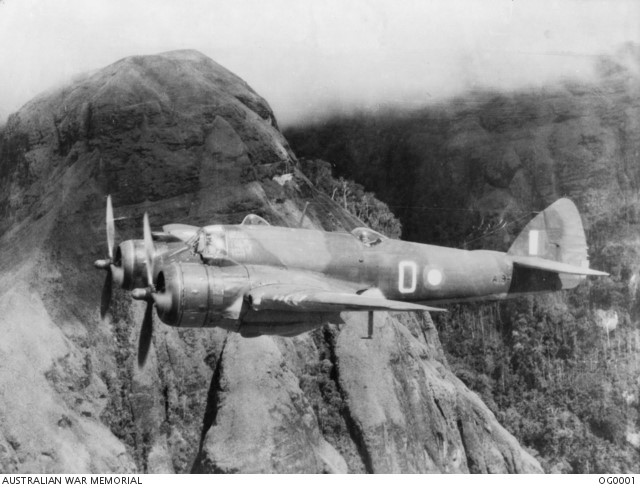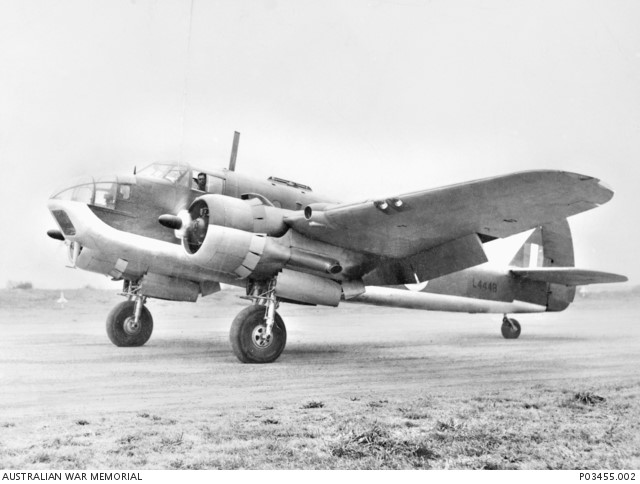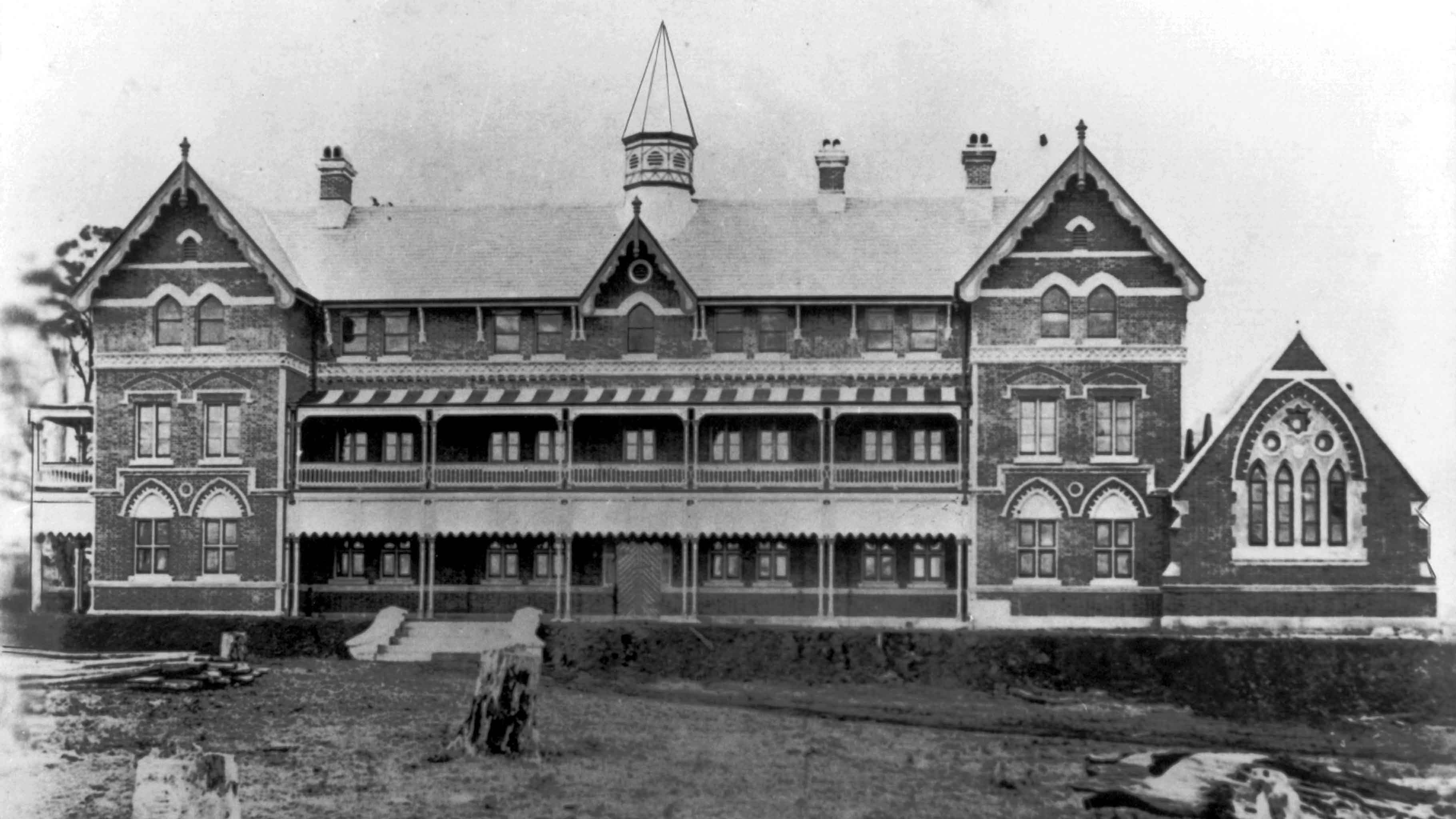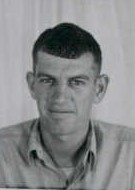Flight Sergeant William Beauchamp Cameron, the son of Kenneth Beauchamp Cameron and Eileen Mary Cameron (nee Hooper) was born at Toowoomba in Queensland on 19th February 1917. He applied to enlist in the Royal Australian Air Force as a Trainee Wireless Operator on 2nd February 1940. At the time of his application he was single and employed as an Overseer on his father’s sheep station at Bullamon Plains, Thallon, Queensland. He was enrolled into the Reserve of the Royal Australian Air Force at No. 3 Recruiting Centre in Brisbane on 17th July 1940 for training as an observer after swearing an oath/affirmation. He gave his next of kin as his father, Mr Kenneth Beauchamp Cameron, residing at Bullamon Plains, Thallon, Queensland. He stated that he was of the Church of England religion. On 1st December 1940, he wrote the following letter to Flight Lieutenant Ransome at No. 3 R.A.A.F. Recruiting Centre:
Dear Sir, Today I heard in the Air Reservist’s session over 4QS that you require a number of men to be trained as wireless operators. I am already on the Reserve as an observer, having been enrolled 17th July 1940, but would be only too pleased to be trained as a wireless operator. I have long been interested in radio, and have built several receivers. I can sent about 12 words per minute, and receive ten. I am about six feet 3 inches and weigh around 189 pounds, and am right-handed. Yours faithfully, W. Beauchamp Cameron.
Flight Sergeant William Cameron, at the age of 23 years, was enlisted into the Citizen Air Force of the R.A.A.F. at No. 3 Recruiting Centre in Brisbane on 17th February 1941 for training as an Observer (Navigator) after swearing the statutory oath that he would serve for the duration of the war and an additional twelve months. He joined No. 3 Recruit Centre at Amberley in Queensland on 17th February 1941 and after completing his basic Air Force training he joined No. 3 School of Technical Training at Ultimo in New South Wales on 16th March 1941. On 5th October 1941 he joined the Signals Training School at Point Cook in Victoria. After completing his signals training he joined No. 1 Air Observer School at Cootamundra in New South Wales. He joined No. 1 Bombing & Gunnery School at Evans Head in New South Wales on 4th May 1942.
Flight Sergeant William Cameron qualified for the Wireless Operator/Air Observer qualification badge and was promoted to the rank of Temporary Sergeant on 29th June 1942. He then joined No. 30 Squadron of the R.A.A.F. at Richmond Air Base in New South Wales for operational duty. On 3rd July 1942. He joined No. 1 Reserve Personnel Pool on 2nd July 1943. He joined No. 30 Squadron at Wards Drome in New Guinea for operational duty on 17th September 1942. Whilst serving with No. 30 Squadron he was promoted to the rank of Temporary Flight Sergeant on 1st April 1943.
No. 30 Squadron operated Bristol Beaufighter aircraft whilst in New Guinea. The squadron’s main role was attacking Japanese shipping and air bases around Lae. The squadron destroyed a significant number of Japanese aircraft at Lae.

Australian War Memorial photograph OG0001
A No. 30 Squadron Beaufighter in a valley in the Owen Stanley Range.
Flight Sergeant William Cameron returned to Australia leaving Wards Drome on 14th May 1943. Flight Sergeant William Cameron was a Navigational Instructor of 30 Squadron and member of the crew of a No 5 Operational Training Unit, Forest Hill, New South Wales, Beaufort Bomber A9-126 that crashed whilst on a non-operational cross-country navigational exercise between Moruya and Mallacoota on 2nd July 1943. The aircraft departed from Forest Hill in New South Wales at 0650 hours on 2nd July 1943 for Nowra. The aircraft landed at Nowra at 0742 hours and departed Nowra for Mallacoota via Moruya. The aircraft was observed over Moruya and was last seen flying in a south easterly direction out over the sea at a very low altitude. Aircraft was presumed to have been lost in the sea. At the time of his death William Cameron was 26 years of age. He has no known grave and therefore his name is commemorated on the Sydney Memorial to the Missing. An inquiry was held into the loss of the aircraft and the six crewmembers and the following report was submitted to the Air Board on 19th August 1943:
Beaufort A9-126. The aircraft was reported missing on a non-operational training flight on the 2nd July 1943. It is assumed that although the visibility was good there were a few scattered showers and it is most probable that the pilot flew into an area of reduced visibility and endeavoured to maintain contact flying by pushing the control column forward, then due to the slow reaction did not stop the aircraft’s descent before it struck the sea. This type of crash would inevitably cause fatal injuries to all passengers. Another natural assumption is that the pilot may have been merely indulging in low flying contrary to orders, and, due to straight forward error of judgement, struck the sea with fatal injuries to all aboard. However, the pilot was a very steady type of airman, conscientious, with just average ability, and therefore it is considered that the first given reason is in all probability the most accurate.
For his service during World War 2 he was awarded the 1939/1945 Star, the Pacific Star, the War Medal and the Australian Service Medal 1939/1945. William Cameron’s name is commemorated on Panel No. 112 at the Australian War Memorial in Canberra and locally on the Toowoomba Soldiers’ Memorial Hall World War 2 Honour Board, the Toowoomba Mothers’ Memorial, the St Luke’s Church, Toowoomba, Memorial Window, the St Luke’s Church, Toowoomba Parish, Roll of Honour and the Toowoomba Grammar School World War 2 Honour Board. The stained glass memorial window was installed in St Luke’s Church in Toowoomba to honour his memory and that of his brother, Richard Beauchamp Cameron who lost his life in an aircraft accident.

Australian War Memorial photograph P03455.002
A Bristol Beaufort aircraft of the type in which William Cameron lost his life.




